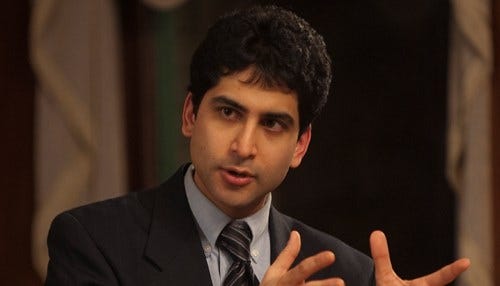Two Time-Sensitive Opportunities for Civic Action this Earth Month

Subscriber Benefit
As a subscriber you can listen to articles at work, in the car, or while you work out. Subscribe NowHiking through a natural area with a reusable bottle of fresh, clean drinking water is likely an image that you can relate to during springtime in Indiana. But neither achieving clean drinking water nor having easy access to nature happens spontaneously: It occurs because of decisions we make as families and as citizens. As we enter the final stretch of Earth Month and the 2019 Indiana General Assembly, we have — as citizens — incredible and time-sensitive opportunities to help make sure that our drinking water is safe for everyone and that nature is far more accessible across our state.
When it comes to our drinking water, we have seen a 22% decline since 2005 in state government staffing that oversees Indiana’s 4,000 drinking water systems — despite our state’s population growing nearly 8% during that same period. That major drop in staff has had consequences: technical assistance visits to drinking water systems have plummeted by more than 40%. Increasing staffing for civil servants involved in protecting our drinking water systems will help ensure that operations of all sizes are safe and secure. Furthermore, increasing vital staff will reduce the chance of drinking water scares that we have seen before in Indiana — whether from contamination of sources of our drinking water or aging lead pipes. As an engaged citizen, you can help reverse this concerning trend by urging your state representative and state senator to support the addition of 12 new staff members to the Indiana Department of Environmental Management’s Drinking Water Program — which would require just 0.0046% of the Indiana state government’s annual budget.
While we can take pride in our state’s natural wonders, our state has far less publicly owned land than key Midwest peers. In Indiana, less than 5% of our land is publicly owned. In Wisconsin, it is nearly 18%. In Michigan, it is 28%. Furthermore, our shared commitment to saving our most endangered woodlands, wetlands, and prairies has seriously wavered: Our state government earmarks 90% less of its general funds to protect endangered open space protection compared to the peak in the 1990s. With the growth of specialty license plates, we receive just half the money than we once did when the “Environment” license plate — which also funds wilderness conservation — was the sole specialty plate in Indiana.
The precipitous drop in our state’s investment in protecting open spaces means that our state is vulnerable to losing priceless natural areas and wildlife habitats to suburban sprawl each year. In addition, Indiana could better tackle its youth obesity epidemic (where we rank 9th in the nation) and rise up in our mental health rankings (where we are 42nd in the US) if we reversed this immense decline in natural areas protection; there is clear medical evidence of the positive physical and mental health benefits that arise from being in nature and having more outdoor opportunities for physical activity. Please contact your lawmakers and urge an annual increase in funding for the Benjamin Harrison Conservation Trust — which enables our state to forever protect endangered open spaces — by $1,000,000, a mere 0.0059% of our state’s overall annual budget. That funding level is substantially under what is needed to save vulnerable habitats, but begins to reverse the serious decline our state’s land acquisition efforts have faced.
During Earth Month, our minds can be focused on our immediate surroundings — how we can be better environmental stewards in our homes, places of worship, and workplaces. And these are wonderful, needed goals that will help to steadily shift our culture in a more sustainable direction. But we cannot foster a true culture of environmental sustainability in Indiana if we don’t shape the views of our elected officials as well, especially those of our budget leaders, Reps. Tim Brown, Todd Huston, & Greg Porter, and Senators Ryan Mishler, Travis Holdman and Karen Tallian, and that of Governor Eric Holcomb. Please do your part by contacting your lawmakers as well as the Governor to strengthen investment in our drinking water systems and nature areas. With just a handful of days left in the legislative session, time is of the essence.
Jesse Kharbanda is Executive Director of the Hoosier Environmental Council.
